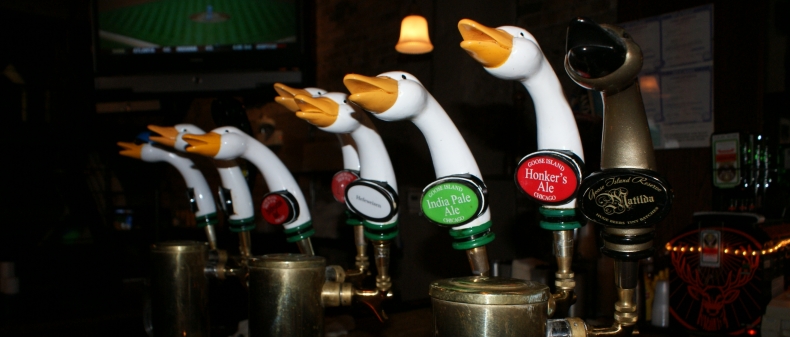
In an ideal world beer drinkers would choose to support the independent craftsperson — the brewer that mashes in his or her own space, with attention to detail and a flair for the creative. But things aren’t ideal. Big guys brew less expensive beer and drinkers often can’t be bothered to seek out new things, no matter how much self-styled artisans try to re-frame the discussion.
That having been said, craft brewers have made great strides in recent years to boost their profile and increase their shelf space. LCBO figures point to nearly 30% growth in craft beer sales last year, and an even more remarkable 35% the year before.
American numbers show 12% growth last year, and 13% in 2011 — figures significant enough to catch the attention of the larger brewers who saw a drop in production of five million barrels in 2012, according to Brewers Association.
“Brewers Association?” you say. “Who’s that?” According to its website, it’s a group of about 40,000 industry types whose purpose is to “promote and protect small and independent American brewers, their craft beers and the community of brewing enthusiasts.”
Last year it launched a campaign to draw the public’s attention to the difference between the little guys and the fake little guys (small production breweries operated by much larger ones). “Craft vs. Crafty” is a public relations exercise in calling out the corporate giants that claim indie cred… and it’s working. Brand Channel, Monday, revealed how the New York Yankees were shamed into re-flagging their “Craft Beer Destination” beer stand to something called “Beer Mixology Desitination” (whatever that means). The reason for the new signage: craft beer fans noted all the draught being dispensed at this particular beer stand was produced by breweries owned by MillerCoors, and therefore not craft beer at all.
To be clear, there’s no law on the books that sets out what can and cannot be called a craft beer — this is simply a (successful) Brewers Association branding scheme to convince the beer drinking public to reconsider the origins of what’s in their mug.
Technically, by Brewers Association standards, Goose Island is not a craft brewery, because more than 25% of its shares are owned by a non-craft brewer (Anheuser-Busch InBev). Even if the Chicago-based brewery’s annual production falls short of the six million barrel mark (the maximum threshold established by Brewers Association), and even if they use quality ingredients, and even if they’re creating delicious and inventive beers… Brewers Association doesn’t want you calling them “craft brewers.”
This week marks the first foray into Canada for Goose Island, now shipping two very fine beers — Sofie and Matilda — north of the border. At the ceremonial launch last Thursday, Goose Island’s Education Director spoke candidly about how the craft beer community reacted to the brewery’s sale to AB InBev. “People wanted to burn us down,” Suzanne Wolcott told the lunch-time assembly at Nota Bene. Customers pledged to cut ties and staff started looking for new career opportunities.
What actually changed? According to Wolcott, AB InBev stepped up Goose Island’s production, expanded their distribution and “now they’re drug testing our brewers…” and that’s about it. (If you’re wondering, Wolcott says the HR department has been very helpful in finding ways to make sure the brewers pass their drug tests).
It would be easy to dismiss Goose Island based on its familial ties to Bud Light Lime, but I can’t do it. I really enjoyed both beers. If your community-focused, independent-minded, locavore self can’t stomach that, that’s up to you.
Sofie (named for the founder’s granddaughter) is a Belgian-style farmhouse ale (a saison) that has a champagne like effervescence, with orange and vanilla flavours. Made in two stages, the beer is aged in oak barrels for complexity, then mixed with new, un-aged Sofie, to give it a softer texture.
Matilda (named for Matilda of Tuscany, who according to legend, funded the establishment of the Orval Monastery; one of only eight Trappist breweries currently in existence) is Goose Island’s best selling Belgia-style ale, and has a more earthy taste than Sofie, with some fruitiness and spicy flavours like cloves.
How you do your shopping, really, is entirely up to you. My beer money mostly stays in this province, but I wouldn’t feel the least bit embarrassed to uncork a bottle of Goose Island. Good beer deserves to be appreciated for what it is.
____
Dan Grant is currently working towards his Prud’homme Beer Certification. Follow him on Twitter at @BrewScout.
For more, follow us on Twitter at @torontostandard and subscribe to our Newsletter.














